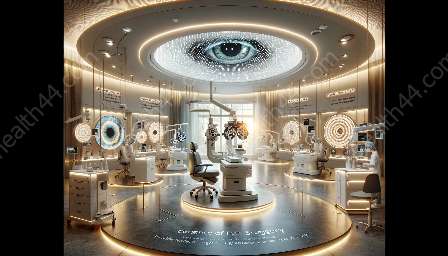Ocular surface disorders, affecting the outer layer of the eye, can have significant implications for vision care and overall health. Read on to explore the causes, symptoms, treatment, and management of these disorders, alongside tips for maintaining optimal ocular surface health.
Ocular Surface Disorders: An Overview
Ocular surface disorders refer to a group of conditions that affect the outermost layer of the eye, including the cornea and conjunctiva. These disorders can lead to discomfort, visual disturbances, and potential complications if left unmanaged. Some common ocular surface disorders include:
- Dry Eye Syndrome: Characterized by inadequate tears to lubricate and nourish the eye surface.
- Conjunctivitis: An inflammation of the conjunctiva, often caused by infections or allergies.
- Corneal Abrasions: Scratches or injuries to the cornea, leading to pain and potential infections.
- Corneal Dystrophies: Conditions affecting the cornea's structure and function, leading to visual disturbances.
- Corneal Ulcers: Open sores on the cornea, often caused by infections or injuries.
Impact on Vision Care
Ocular surface disorders can significantly impact vision care, leading to symptoms such as blurred vision, light sensitivity, discomfort, and fluctuations in vision quality. These conditions can affect daily activities such as reading, driving, and using digital devices, impacting overall quality of life. Proper management and treatment of ocular surface disorders are essential to preserving visual acuity and maintaining comfortable, healthy eyes.
Effects on Overall Health
Beyond their impact on vision, ocular surface disorders can also have implications for overall health. Chronic conditions like dry eye syndrome have been linked to increased discomfort, decreased productivity, and impacts on mental well-being. Additionally, some ocular surface disorders can be associated with underlying systemic conditions, making their early identification and management crucial for overall health maintenance.
Treatment and Management
Effective management of ocular surface disorders often involves a combination of approaches tailored to the specific condition and its underlying causes. Treatment may include:
- Artificial tears and lubricating eye drops to alleviate dryness and discomfort.
- Anti-inflammatory medications for conditions like conjunctivitis.
- Protective eyewear to prevent further corneal injuries and aid in recovery.
- Specialty contact lenses or surgical interventions for certain corneal conditions.
- Identifying and addressing underlying systemic conditions contributing to ocular surface disorders.
Successful management of these disorders may require ongoing care and collaboration between patients and optometrists or ophthalmologists to achieve the best possible outcomes.
Maintaining Optimal Ocular Surface Health
While the treatment of ocular surface disorders is vital, proactive measures for maintaining optimal ocular surface health can also play a significant role in preventing and managing these conditions. Some tips to promote healthy ocular surfaces include:
- Adopting good hygiene practices, such as regular handwashing and avoiding eye rubbing.
- Following a balanced diet rich in eye-friendly nutrients and staying well-hydrated.
- Using protective eyewear in high-risk environments, especially during sports or activities with potential eye injuries.
- Taking regular breaks and using the 20-20-20 rule to reduce digital eye strain.
- Seeking routine eye exams to monitor ocular health and detect potential issues early on.
By integrating these habits into daily routines, individuals can help to support and preserve the health of their ocular surface.

































